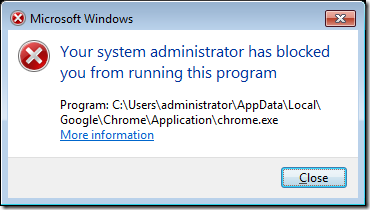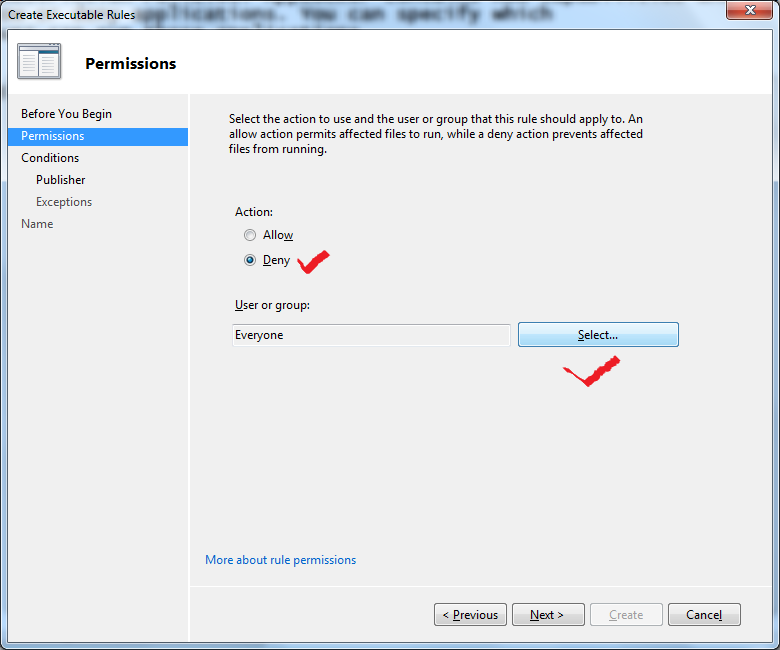

exe files which are not signed.AWS provides AWS Security Token Service (AWS STS) as a web service that enables you to request temporary, limited-privilege credentials for AWS Identity and Access Management (IAM) users or for users that you authenticate (federated users). \\domain\netlogon\ProfileUnity\.exeĪs File Hash Rule to the "Allow" list same as for. Note: If there are any issues running ProfileUnity during logoff please add: Note: The File Hash rule must be updated whenever the executable is changed/updated. Name ( Example): ProfileUnity DIA – File Hash.


#Configure applocker install
Browse to the Install folder of the Executable.Click ‘Browse Files’ (or ‘Browse Folders’ if that can be used).Select the executable to generate the rule from:.Rule 7 - File Hash Rule (for unsigned executables): exe files that are not signed, a Path or File Hash rule may be used: Name ( Example): ProfileUnity DIA – Publishers Signature Įxample: \DEVICE\*\VOLUMES\C\PROGRAM FILES\\*įor.Browse to the Install folder of the App.Using a rule with Custom Values with Wildcards for the Publisher string may also be used to make the rule more inclusive if the signatures do not match exactly, otherwise multiple signature rules must be used. If using FlexApp DIA (or UIA) apps, all executables in the DIA must have the same Signature for the DIA to work correctly. Applocker Rules for FlexApp DIA/UIA Packages
#Configure applocker full
If the install uses a Non-Default Path, use the correct full Installation Path. Note: This rule uses the Default Installation Path using the AppLocker path variable. Name ( Example): ProfileUnity – Install Folder.Rule 4 – ProfileUnity Client Install Directory Name ( Example): ProfileUnity – Publishers Signature.Move the slider up to pint to ‘Publisher’ (all other fields will be ‘*’).Browse into the ‘Client.NET’ sub-folder.Browse to the ProfileUnity Install folder (Default: ‘C:\Program Files\ProfileUnity’).Publisher: Import Publisher information using the following:.Rule 3 – ProfileUnity Client.NET Directory In this case, use the redirected location for the rule. Note: This directory can be redirected to a fixed location like C:\Temp using ProfileUnity ADM GPO template. You can make them appear temporarily by re-running C:\Program Files\ProfileUnity\userinit.exe, which re-runs the login process but leaves the temporary files for troubleshooting purposes. Note: This directory and these files only exist during ProfileUnity execution and will not appear within a user session. Name ( Example): ProfileUnity – Users Temp Folder.Path: C:\Users\*\AppData\Local\Temp\prou*.Rule 2 – ProfileUnity User Temp Directory If unsure, check the ProfileUnity console under Administration (top right)->ProfileUnity Tools->Deployment Path. Note: This is the current deployment path. Name ( Example): ProfileUnity – Network Share.Create rule in: Executable Rules and Script Rules.User cannot logon to ProfileUnity client and/or certain features do not run or do not run properly.Ĭreate AppLocker exception rules for the ProfileUnity netlogon directory as well as other paths used by ProfileUnity executables. Windows 10’s AppLocker prevents ProfileUnity from running.


 0 kommentar(er)
0 kommentar(er)
